Communing with the Alley Pond Giant
The oldest and tallest tree in New York lives right off the Horace Harding Expressway.
Last month, some friends and I paid our respects to the Alley Pond Giant, which the New York Parks Department alleges may be the oldest and tallest tree in the city. You can visit it in Alley Pond Park, in Queens, in an untrodden glade just beyond the end of a chainlink fence. For the sake of the tree’s safety, its exact location is kept on the down low, though it doesn’t take long to find the exact GPS coordinates. The Google Maps pin is inaccurate, but will point you in the right direction.
The Giant is a tulip tree, a staple of broadleaf forests along the East Coast. In 2000, it measured 133.8 feet tall, and it’s estimated to be 350 years old. There’s a plaque near the park entrance that puts its age in historical context:
It was a sapling in the 17th century, when the Dutch West India Company sent a group of Walloon families, a group of 32 Belgian Huguenot families who joined the Dutch in 1624 on the ship Nieu Nederland (“New Netherland”) to colonize New Amsterdam to Manhattan. In 1790, when General George Washington passed close by on a tour of Long Island, it would have been a well-established young tree.
It’s hard to put into words how it feels to get close and personal with something this huge and old and alive. In the past, encounters with massive elder plants rendered me small and cosmically insignificant, like a blip caught in the cross section of a tree ring. This time, something different happened. I was energized from my skull to my gut, as if all the microscopic mites in my eyebrows and the bacteria in my belly were vibrating in tune with me from our proximity to the tree. Instead of smallness, I felt expansiveness. An instant intimacy with this total stranger. A glimpse—not as visual as a glimpse, but the gut sensation of one—at the whole, humongous duration of its accumulated existence.
The Parks Department sign continues:
From the time when native Matinecock people trod softly beneath its limbs, to an age when automobiles roar by oblivious to its presence, this tree has miraculously survived the upheavals of the modern age. It is perhaps one of the last witnesses to the entire span of the city’s history, from the time of tiny Dutch settlements to that of a modern metropolis.
Liriodendron is an ancient genus that dates back to the time of the dinosaurs. It belongs to the Magnolia family, which includes some of the earliest flowering plants. There are two extant species: L. chinense, which grows in Asia, and L. tulipifera, which grows here. The tulip tree’s flowers are the size of goblets, intricately inlaid with colorful geometric patterns.
The Alley Pond Giant is surrounded by other old tulip trees and similarly grand maples. Also invasive English ivy and discarded plastic. At this advanced age, the tulip tree’s bark forms plates of crocodilian armor. Around 90 feet up, its branches bow and bend at odd angles with muscular confidence. Its root base spreads across the ground like the foot pad of some colossal mammoth.
How do we hold in all the despair? There’s so much; it spills through my fingers like syrup. The ugliness inside us that erupts into clouds of ash. The brighter paths not taken. The awful enormity of what we’ve lost. The imagined alternate timelines of what could have been.
350 years old is middle aged for a tulip tree. There should be Alley Pond Giants up and down every county of the East Coast. Only a fraction of a sliver of old growth forest remains here. Everything else, we’ve claimed for ourselves. The tidy rows of logger-managed trees that we see along our highways count as nature in the same way a fish tank counts as the ocean.
You can see why I was pleasantly surprised with my reaction to meeting this tree. Instead of isolation, there was connection. A groovy reminder from plant to animal that our shared lineage is long and vast.
When I got home, I hit the bonsai forums and found this thread from 2017 about full size trees that look like bonsai. It’s been continuously updated since then with page after page of trees that invoke awe just like the Alley Pond Giant. I encourage you to scroll through. Most of the trees pictured are still with us, sucking our carbon and bestowing us with oxygen. They’re worth defending, no matter how hopeless it seems or how radical their defense may be regarded.
One of my favorite quirks of bonsai is the way it maneuvers nature’s awe into spaces where nature can’t be reached. We can’t all access old growth trees on our own, but we can get a taste of that juice at a bonsai display. The better we develop our bonsai, the greater the high.
I plan to repot this dawn redwood in the spring. When I do, I want to explore ways to sculpt its roots to mimic the mammoth-foot quality of the Alley Pond Giant. I’ve seen similar forms in giant sequoias, and they always strike me as relics from an antediluvian age. My dawn redwood is another living fossil from an ancient lineage. I want it to look the part, and to encourage those who encounter it to seek out similar examples in the world around them. The Alley Pond Giant grows right off the Horace Harding Expressway. Awe-invoking nature is closer than we think, if we can keep it.
Tree reading
One of the East Coast’s few remaining old growth forests is under threat right now, as the Atlanta Police Department is clearing land to build a training facility to enact their Call of Duty fantasies. Other police departments are keeping close eyes on the project; if successful, they’ll likely follow suit with militarized training facilities in their own communities. [Defend the Atlanta Forest]
There’s a cute bonsai related plot arc in a new episode of the Star Trek Lower Decks cartoon. You should watch it. [Tor.com]

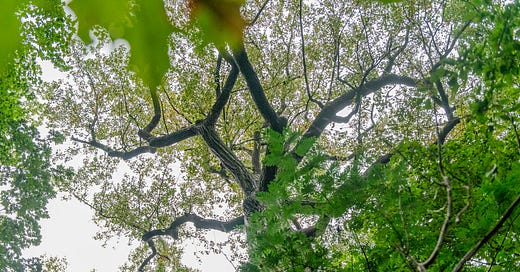


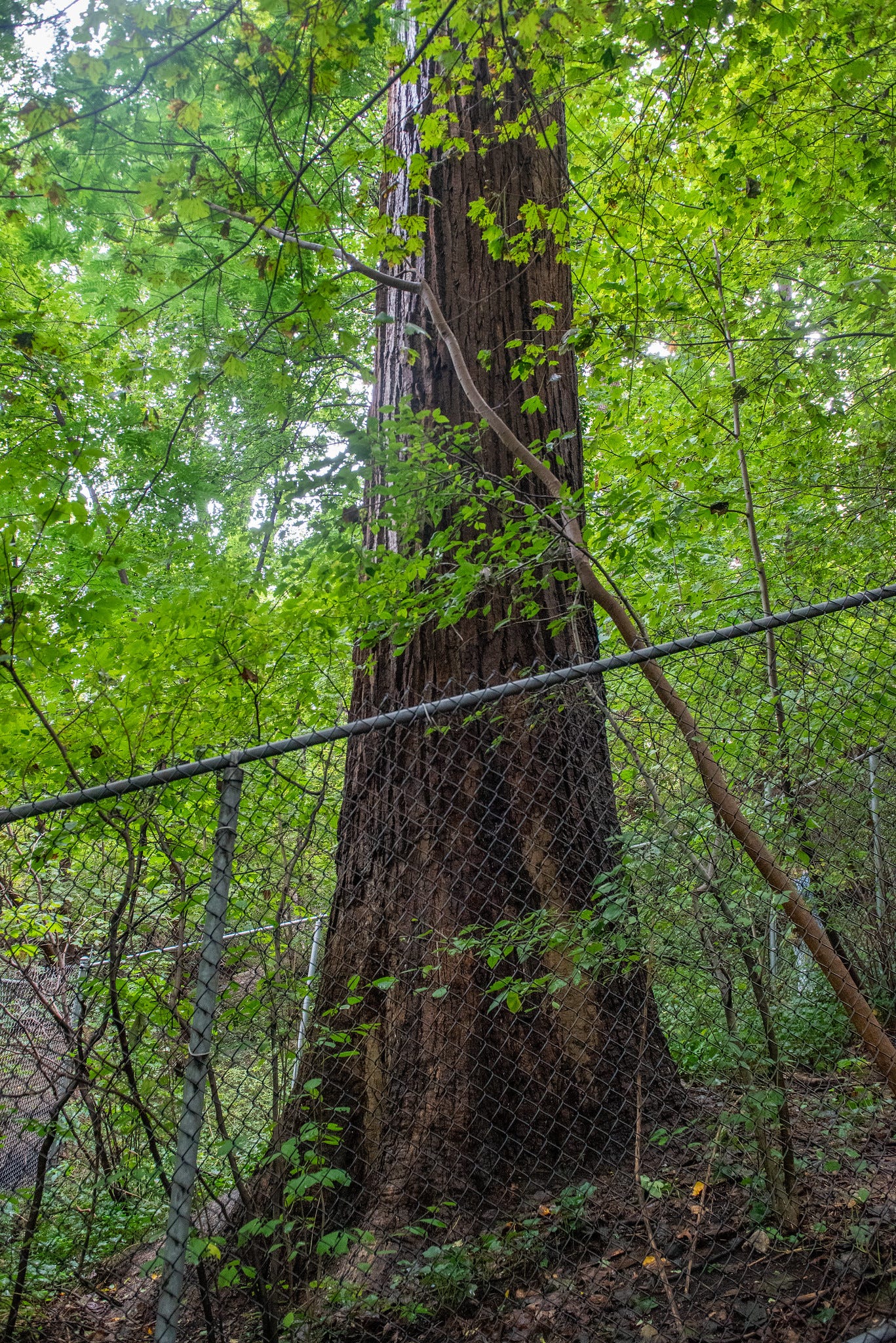
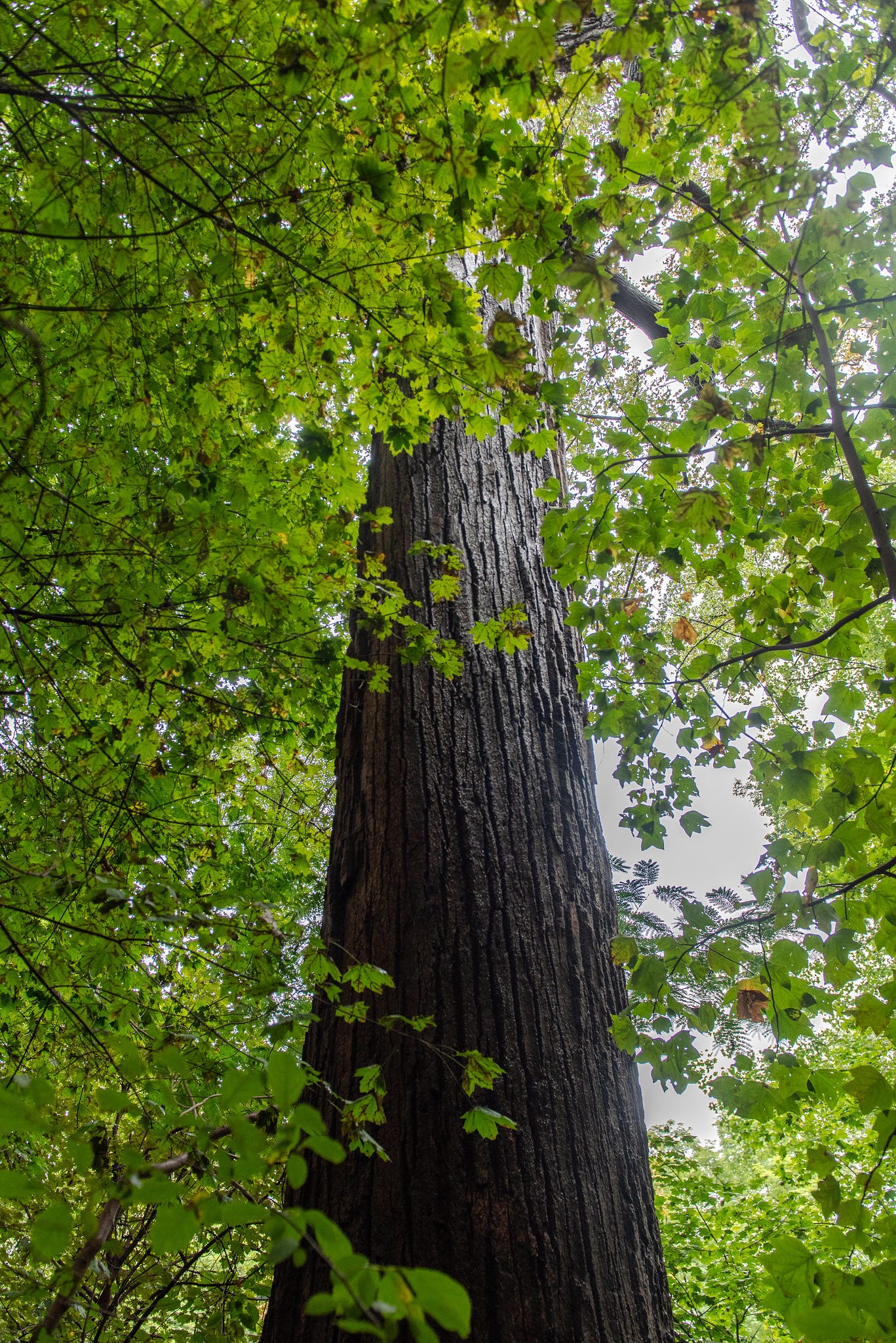
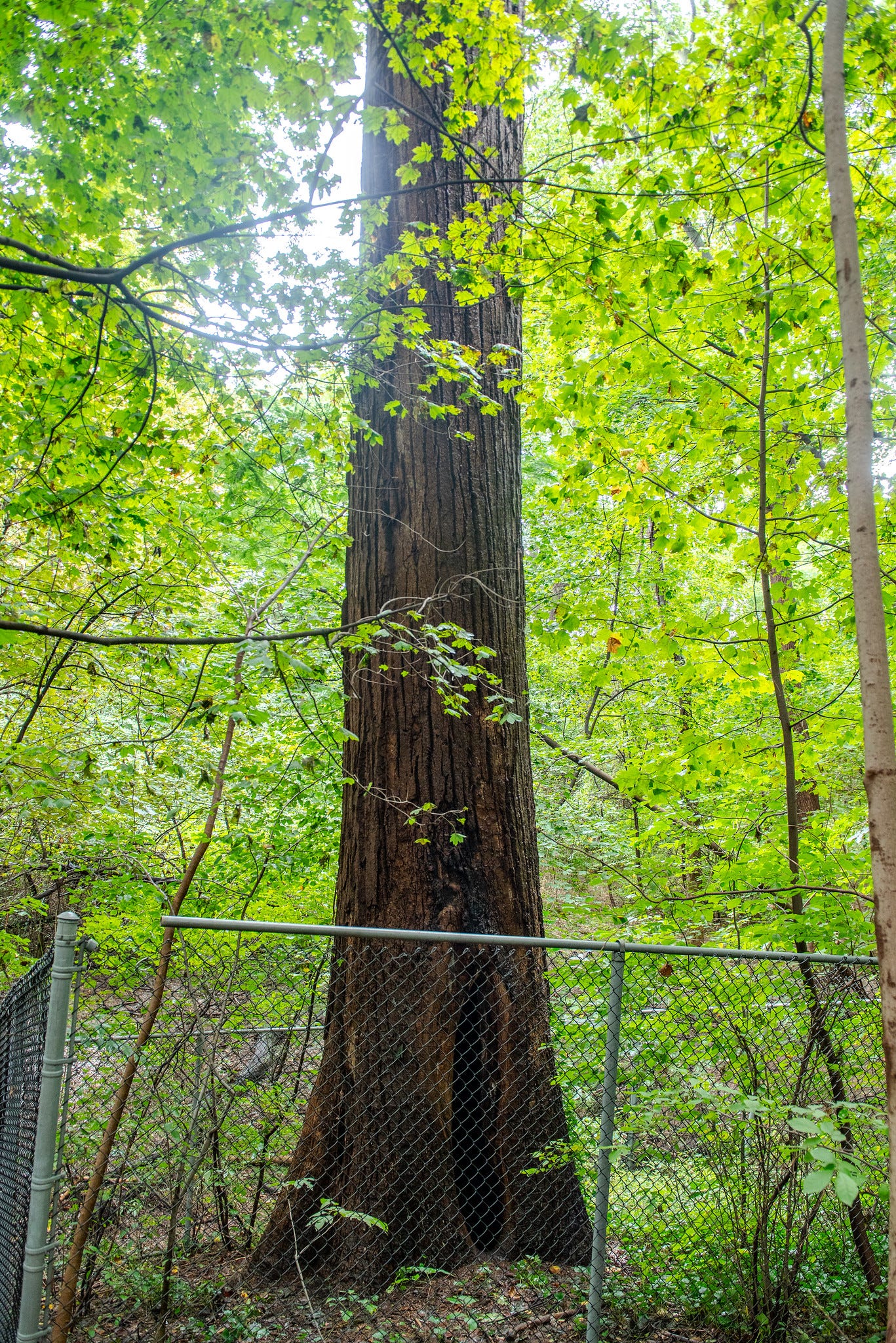
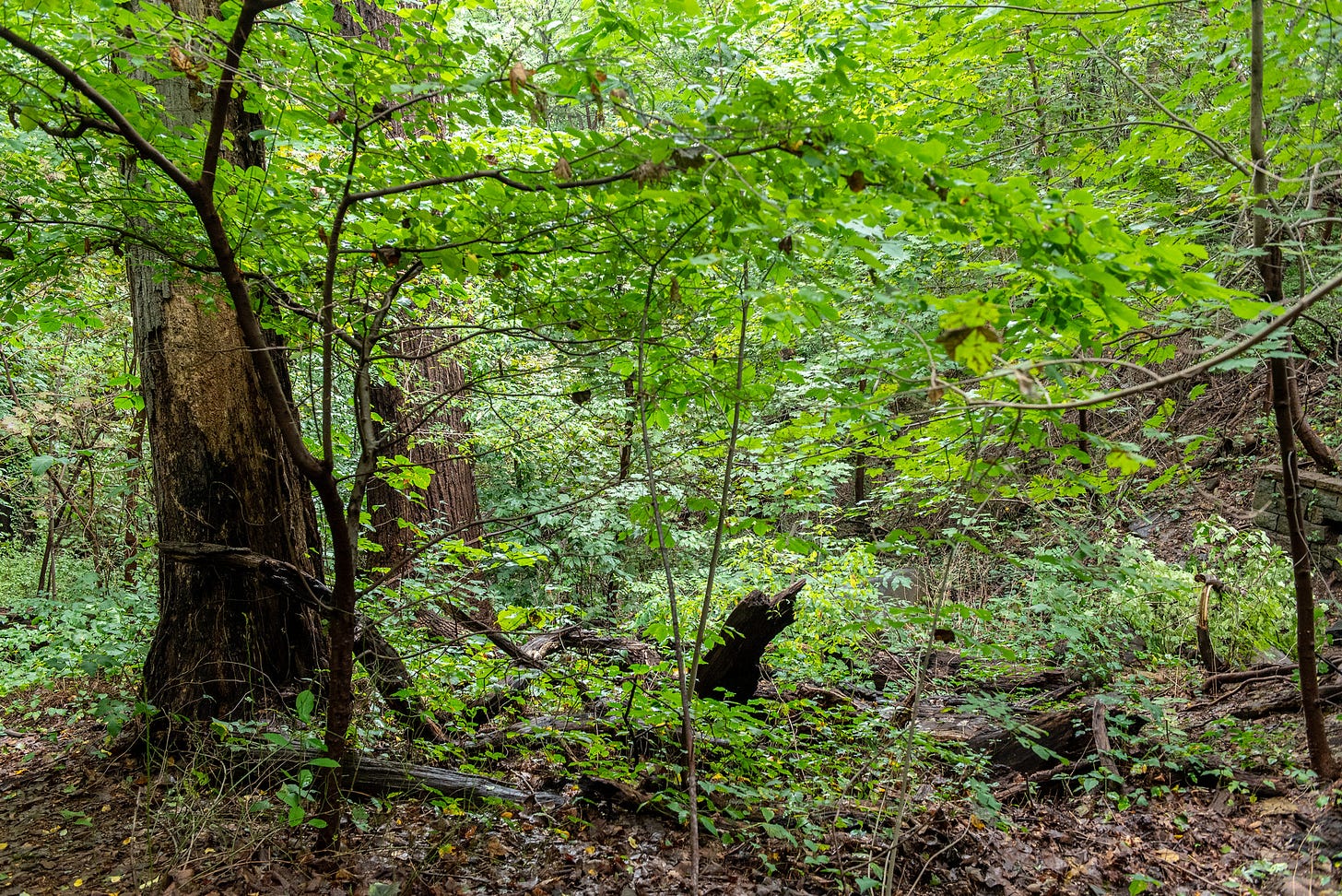
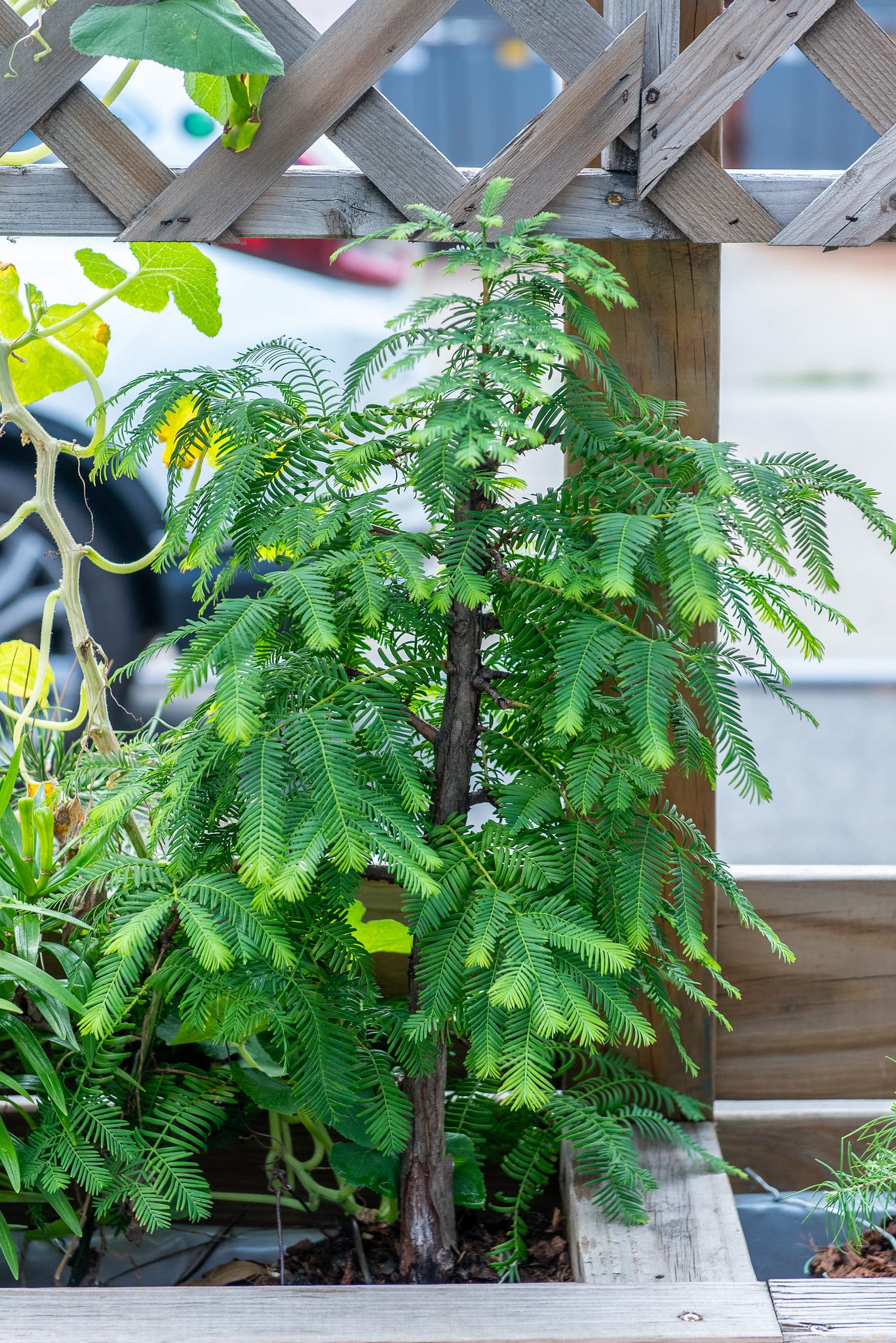
this was very moving, max <3
💚